Teneriffe EquipmentPrevious | Teneriffe Equipment Index | NextHome |
Daisy Winders Despite the commonly held notion that the Crazy Daisy winder originated in the USA by one Ralph C. Springer in the 1940's, the device was actually patented in the US by Antonio Dolia of Crescenzago, Italy (a little town just north of Milan) in 1931. I don't know how much earlier it may have been in existence in Italy. My first example is a rare early Italian version (it was found in Italy), and I have no idea how old it is. The device is actually round, the oval shape in the first picture results from the fact that the knob is bent and it wouldn't lay flat in the scanner. The word 'Brevetatto' is Italian for 'Patented'. Interesting that both the Italian and English word are marked on the front face of the loom. There are two very similar mechanisms for the 'daisy' winder - the second method is illustrated in the 'knit-wit' looms and will be described there (click 'Next' at the top of this page). The pins of the daisy winders are actually a individual wires, straight on one end and bent into a 'C' shape on the other. They are arranged over a steel template with a raised ring - you don't see this; it's a separate piece hidden by the front and back brass cover. When the knob is turned, the pins will rotate over the raised ring, causing the straight end of be pushed forward or backward. It's hard to explain, try looking at the diagram in the patent. Good luck in trying to take one apart; they are very solidly welded together, and if you do succeed, be prepared to pick up all those little pins which will suddenly fall out. It's actually a very clever device. Ralph Springer marketed the loom under the name 'Crazy Daisy Winder' in the US under a patent licence which is marked on the back of loom - faint but readable. He might have licensed the product from the original Italian inventor. His address varies from Culver City to Beverly Hills, CA, and the only date we can rely on for his product is the 1948 publication date of a pattern book (see Reference section below). Most of these are just over 2" in diameter (excluding the pins). Scovill marketed several versions under the 'HERO' brand, including a plastic loom, and also a 3" oversized loom. Scovill was founded in 1802 and still operates today - their primary product is clothing fasteners. ROMAXE seems to be closely related to Scovill, the package size is the same, and the directions on the back are identical. C. J. Bates was founded by Carlton J. Bates (1848-1941) in 1907, and manufactured manicure sets, crochet hooks, and knitting needles in Chester, Connecticut. C. J. Bates was eventually sold to Coats & Clark. The name 'Susan Bates' was used on Coats & Clark products starting in the 1940's, before that it was 'Barbara Bates'. Neither person actually existed. So I'm guessing that the examples shown here were probably made in the 1960's under some arrangement with Coats & Clark. They are clearly marked 'Made in Japan'. The records of the C. J. Bates & Son company were donated to the Thomas J. Dodd Research Center, University of Connecticut Libraries in 2000 by the Cheshire Historical Society. Currently the daisy winder is manufactured in Australia by Birch. I have no information on this company. Suggested Research Topics: first posted 7/23/2009 |
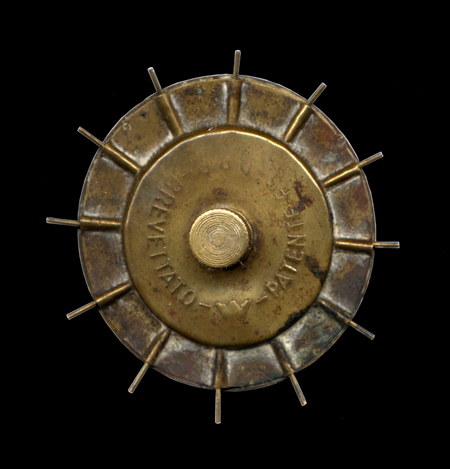
 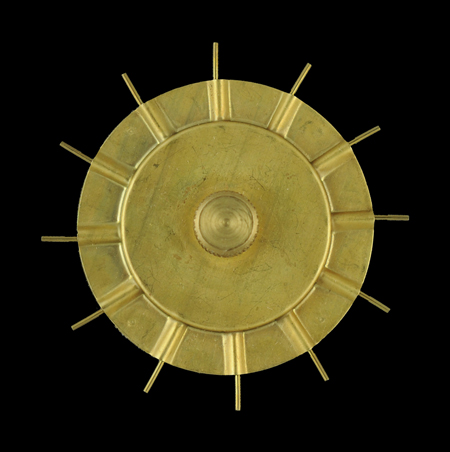
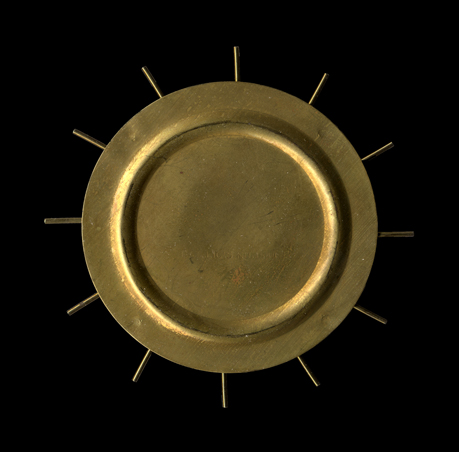 Click here for "Crazy Daisy Winder" instructions. 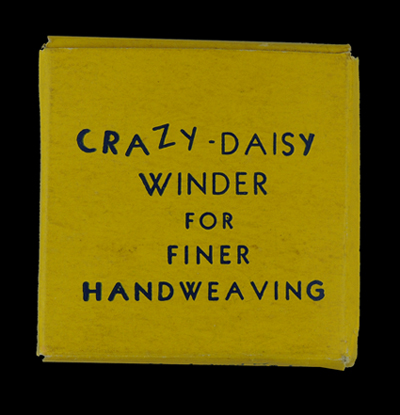
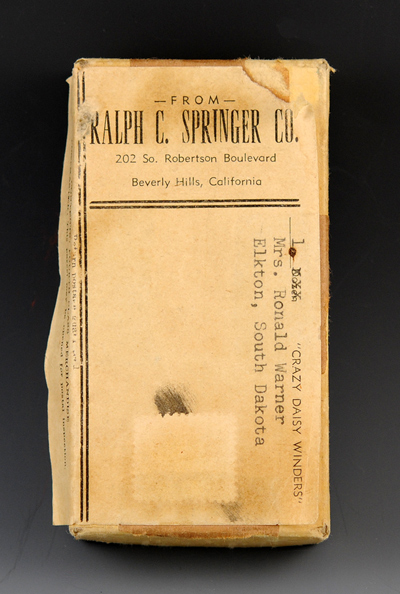 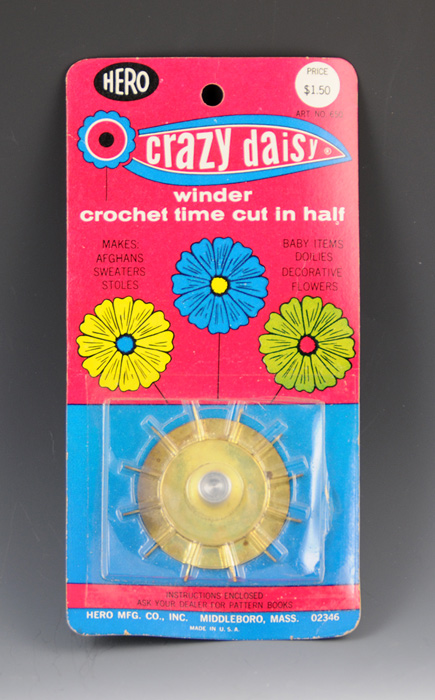 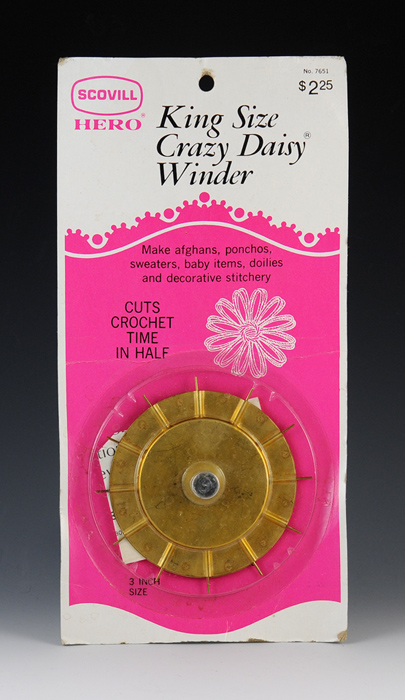
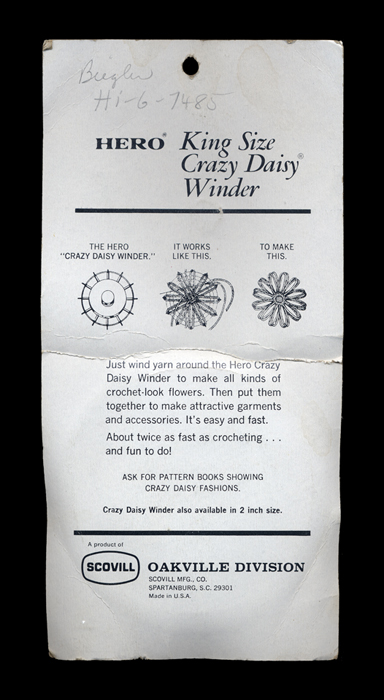 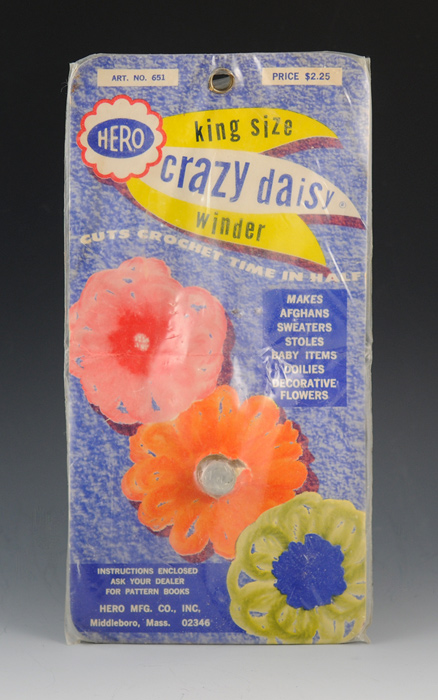
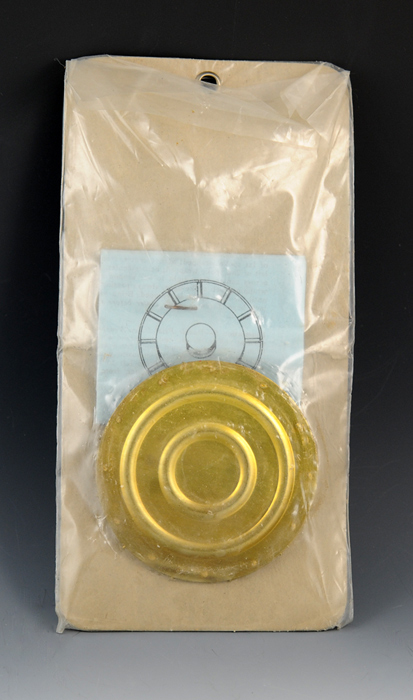 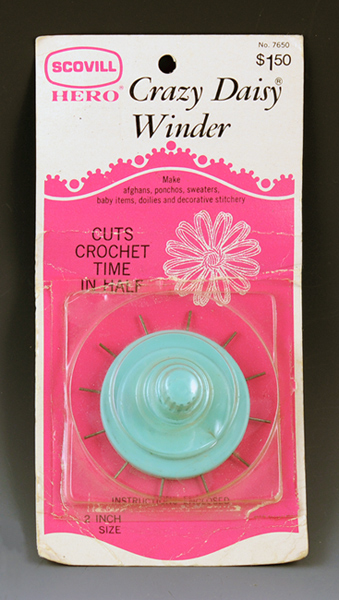
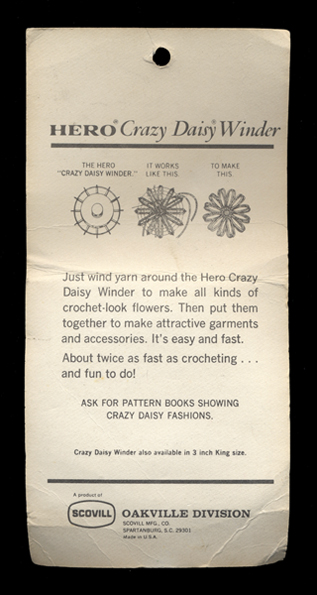 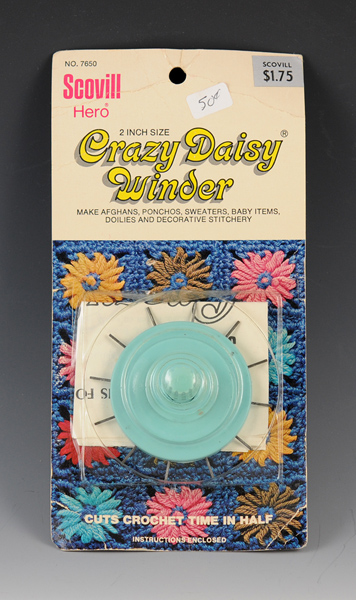
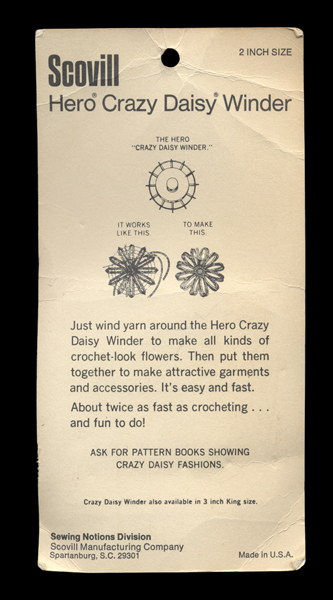 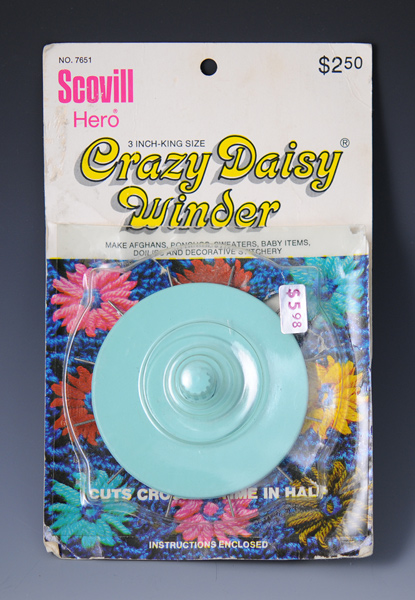
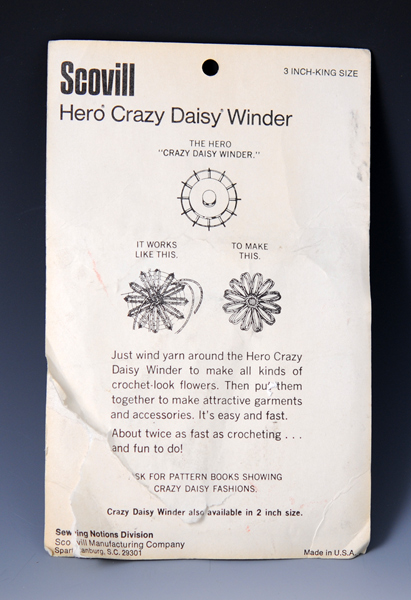 
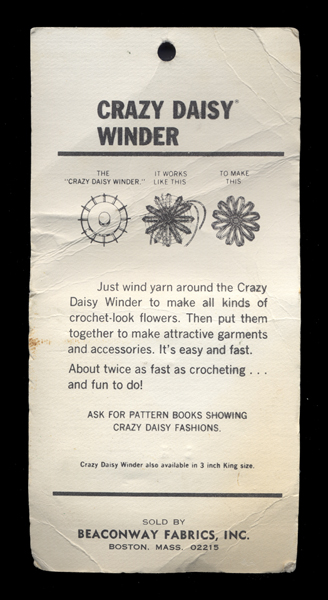 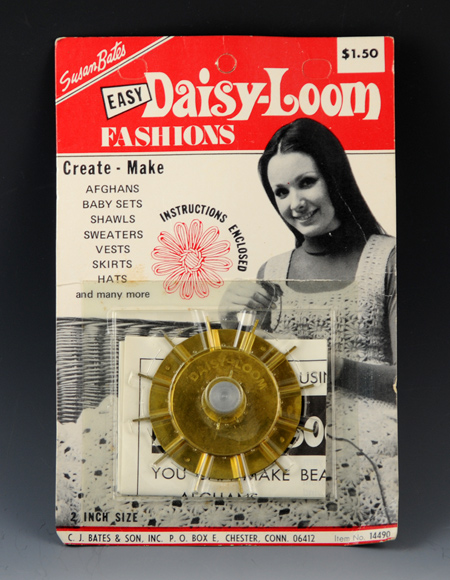
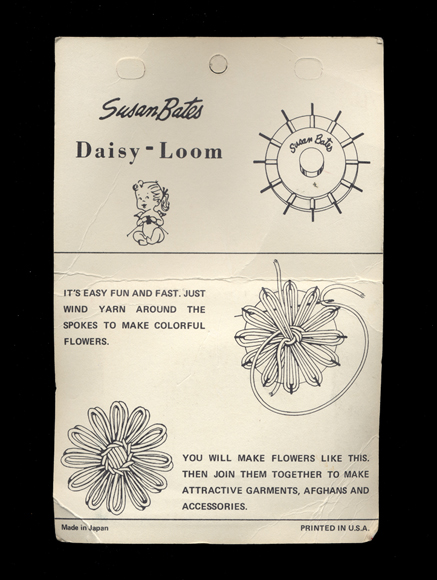 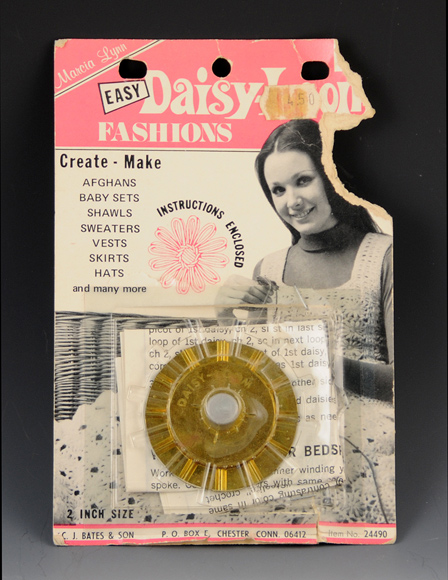
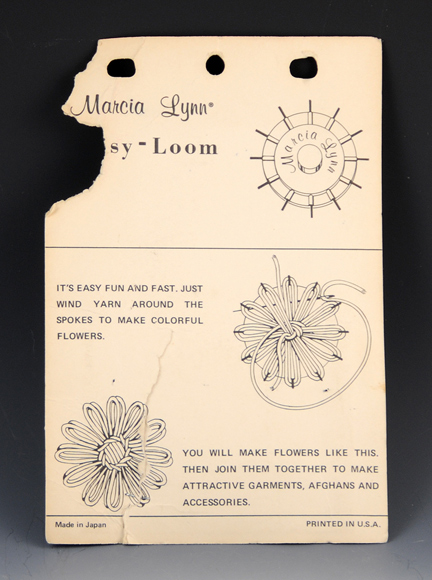 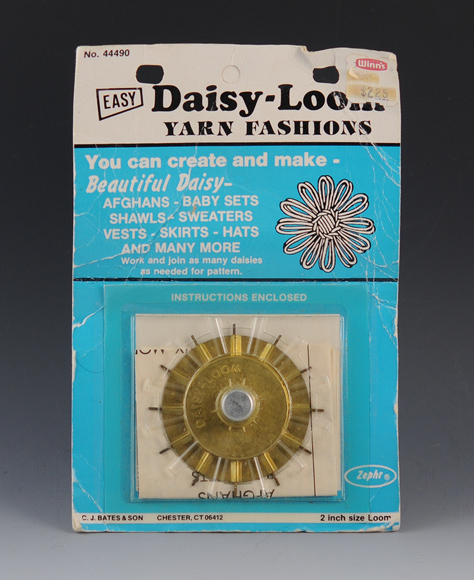
 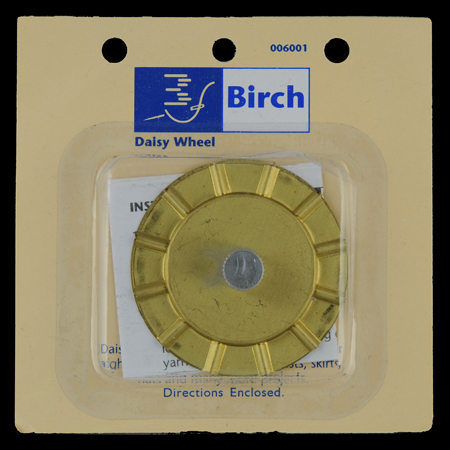 |
References
|